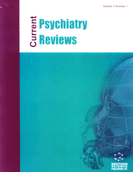Abstract
Body image disturbance has been listed as a diagnostic feature of several psychopathological conditions [1-5]. As body image concerns appear in children as young as 5 years old, it was hypothesized to be an important risk factor for the development of psychopathology, such as Eating Disorders (ED) in adolescence. Results of the current review of the literature support this hypothesis and suggest that young children can (1) estimate as accurately as adults their body size, and (2) show similar cognitive distortions, cognitive biases, and the negative emotions associated with their body image. There is some evidence that children can (1) display severe symptoms of body image distortion such as is present in body dysmorphic disorder (BDD), (2) demonstrate negative stereotypes toward obesity and (3) internalize thin ideal body image. Research suggests that some of the key factors involved in childrens body satisfaction is parental perception and direct comments from peers. Body dissatisfaction can predict body image related psychopathology later in development. In conclusion, intervention and prevention of eating disorders with children under the age of 7 is arguably a viable strategy, and cognitive and behavioural training could involve parents, teachers, mental health practitioners as well as the child him/herself. This training and education should cover early manifestation of body image disturbance and their associated risk factors.
Keywords: Literature review, body image, children, research, treatment
 31
31



